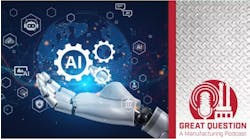To remain competitive in this new global economy, traditional logistics and manufacturing companies must transform operations and offerings. Manual processes, disparate systems and legacy technology often hamstring innovation for these mature businesses, meanwhile silos of information prevent collaborative problem-solving and a unified perspective across centralized and decentralized locations.
The IoT and new industrial revolution
The fourth industrial revolution has been characterized as the combination of physical systems, virtual systems and the IoT. In this new world, smart factories give manufacturers visibility across the entire production value chain and arm them with information and analytics that have tremendous value.
And it’s not small potatoes. According to Accenture, the industrial IoT has the potential to add $15 trillion to the global economy by 2030.
Case-in-point: Spireon, which launched its industry benchmark analytic product using the Birst platform in 2014. Today, Spireon is analyzing data from more than 3 million GPS devices to provide transportation customers a better understanding of their operations, including fleet utilization and performance.
While not every manufacturing company has interest in the IoT and IoT-enabled applications, the prospect of analytics-as-a-service and monetizing data to customers is appealing.
In the case of Telvent Data Transmission Network (Telvent DTN) from Schneider Electric, the company took what was traditionally a manual process for scheduling transportation/storage of refined oil and developed a new analytic product that addresses common pain points along the supply chain. Focused on optimizing downstream controlling, the DTN analytic platform centralizes the command of terminal operations to provide reliable real-time data that supports decision-making to manage capacity, re-routes to prevent overages/shortages, and reduces the manual data-reconciliation required to make these decisions.
Some businesses spend hours each day inputting supply/demand data into spreadsheets that are often disparate and inconsistent. Sound familiar? The IoT enables inventory balance data to be collected from multiple sources, updated as quantities and demand changes throughout the day, validated and translated into terms that are familiar to users—all at the speed of business.
Whether it is deploying IoT services or modernizing traditional reporting platforms with a centralized cloud-based analytic solution, manufacturing and logistic companies must look for ways to stay ahead of competition. For example, most industrial engineering companies gather machine data and metrics that could be leveraged as a managed-service offering for diagnostics and preventative maintenance to modernize the traditional field service line of business. In those scenarios, without analytics, repair services are a commodity-labor offering. Data analytics brings the added value of prediction, enabling proactive upgrades and preventing costly downtime and replacements.
To thrive in the fourth industrial revolution logistics and manufacturing companies must consider deploying modern business-intelligence and analytics platforms that help create digital supply chains. They must then make use of their data. And they must be aggressive in their efforts to break the chains to outdated tools and processes.
Farnaz Erfan is senior director of product strategy with Birst, a cloud-based BI platform.


